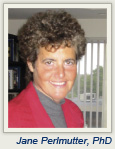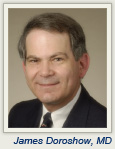If the clinical trials endeavor in oncology is falling short of its goals and if targeted agents have not kept their promise, can a new approach to drug development provide a solution?
 Very possibly, said John Hohneker, MD, Chair of the Workshop Planning Committee for the conference, “Facilitating Collaborations to Develop Combination Investigational Cancer Therapies,” held in Washington in mid-June and sponsored by the Institute of Medicine (IOM) National Cancer Policy Forum. He is also Senior Vice President and Global Head of Development, Integrated Hospital Care, Novartis.
Very possibly, said John Hohneker, MD, Chair of the Workshop Planning Committee for the conference, “Facilitating Collaborations to Develop Combination Investigational Cancer Therapies,” held in Washington in mid-June and sponsored by the Institute of Medicine (IOM) National Cancer Policy Forum. He is also Senior Vice President and Global Head of Development, Integrated Hospital Care, Novartis.
Dr. Hohneker said that the purpose of the workshop was to talk about the many barriers to this new approach to cancer treatment. “Combining investigational products early in their development is thought to be a promising strategy, especially when they target multiple pathways (or more than one step in a pathway), thus conferring greater benefit than therapy directed at a single target.”
Unfulfilled Promise
 Jane Perlmutter, PhD, founder of the Gemini Group, a consulting company, added, “The problem with the way cancer research is conducted is that the biology of the disease is so complicated that, although technology keeps advancing, personalized medicine is still mostly only a promise.”
Jane Perlmutter, PhD, founder of the Gemini Group, a consulting company, added, “The problem with the way cancer research is conducted is that the biology of the disease is so complicated that, although technology keeps advancing, personalized medicine is still mostly only a promise.”
Targeted agents for cancer haven’t panned out to the extent hoped. Although a few might work sometimes or for a short time, the effects have not been significant or durable. And many are more toxic than expected. “Their regulation is confusing and/or interpreted too conservatively, and despite the great need, there is limited incentive for pharmaceutical companies to collaborate with each other,” said Dr. Perlmutter.
Advances in genomics and cell biology have paved the way for increasingly sophisticated targeted therapies, but cellular pathways contain redundancies that can be activated in response to inhibition of one or another pathway, thus promoting emergence of resistant cells and clinical relapse.
The traditional path to drug development, even targeted therapy, has been one at a time. Sometimes a new drug is added to a standard regimen and then compared to the standard alone, but regardless of how or with what it is used, it has to work on its own.
Cooperative Development
This system is no longer completely viable in cancer and needs to be modernized. A new approach would provide the flexibility to evaluate combination regimens in a single development program that can screen all tumors for their pathway dependencies, resulting in efficacy based on screening results and experience with patterns of resistance.
However, despite the potential benefits of such a scheme, uncertainty and risk abound. First, it is usually impossible to characterize the effects of the individual components. Second, combinations would probably yield considerably less information about safety and efficacy than would have been available had they been developed individually. Third, patients and physicians must not only be informed of more-than-usual risk, they must be willing to accept it. Fourth, there should be a compelling biologic rationale for their use and substantial reasons why the agents cannot be developed individually.
The Science Is Complex
 James Doroshow, MD, Deputy Director for Clinical and Translational Research, NCI, discussed the scientific challenges facing development of combination targeted therapeutics:
James Doroshow, MD, Deputy Director for Clinical and Translational Research, NCI, discussed the scientific challenges facing development of combination targeted therapeutics:
- The mechanisms of action for a growing number of targeted agents that are available for trials are not completely understood.
- Lack of the right assays or imaging tools means inability to assess the target effect of many agents, and assays are not standardized.
- Preclinical models to evaluate efficacy, dosing schedule effects, biomarker utility, and toxicity are not available for combination therapies.
- Clinical trials methodology remains unclear with regard to numbers of patients, tumor biopsies, relevance of histologic homogeneity, and pharmacokinetic interactions.
- Intellectual property and regulatory matters are daunting.
Dr. Doroshow also discussed mechanism of action (or mechanism of resistance) studies in early-phase trials. Problems include the evaluation of actual vs presumed sites of target engagement, evidence to support further development, demonstration of the relationship between dosing schedule and systemic exposure to target effects, and relevance of biomarkers.
“In addition, we need to investigate the molecular effects, toxicology, and other safety signals of combination agents in surrogate tissues,” said Dr. Doroshow. “This is a huge undertaking, and unfortunately it is not necessarily predictive of clinical benefit. That requires larger, later-stage trials.”
 Michael T. Barrett, PhD, Associate Professor and Head of the Oncogenomics Laboratory, TGen, added that cancer is extremely genetically unstable, resulting in highly karyotypically and biologically individual malignancies. Thus, each patient’s cancer could require its own specific therapy. Even if this were possible and practical, the treatment could ultimately be thwarted by emergence of a resistant variant genetic subline.
Michael T. Barrett, PhD, Associate Professor and Head of the Oncogenomics Laboratory, TGen, added that cancer is extremely genetically unstable, resulting in highly karyotypically and biologically individual malignancies. Thus, each patient’s cancer could require its own specific therapy. Even if this were possible and practical, the treatment could ultimately be thwarted by emergence of a resistant variant genetic subline.
Dr. Barrett also noted that each genome has unique sets of selected aberrations and mutations, of which multiple populations can be present at biopsy. These mutations can be asymmetric; they can progress and metastasize, and thus resist treatment. He warned that application of genomic tools to combination therapy has to be based on unbiased profiling of biopsies, as well as identification of therapeutic vulnerabilities in all patients.
Kurt Bachman, PhD, Head of Translational Medicine and Biology, GlaxoSmithKline, added, “The challenge is to identify the tumor types most likely to respond, to find biomarkers that predict a response, and to define the relationship of the predictors to the biology of the inhibitors.” ■
Disclosure: Dr. Hohneker is employed by and owns stock in Novartis. Dr. Barrett has a current research contract with AstraZeneca. Dr. Bachman is employed by GlaxoSmithKline. Dr. Perlmutter reported no potential conflicts of interest. Dr. Doroshow reported no potential conflicts of interest.

